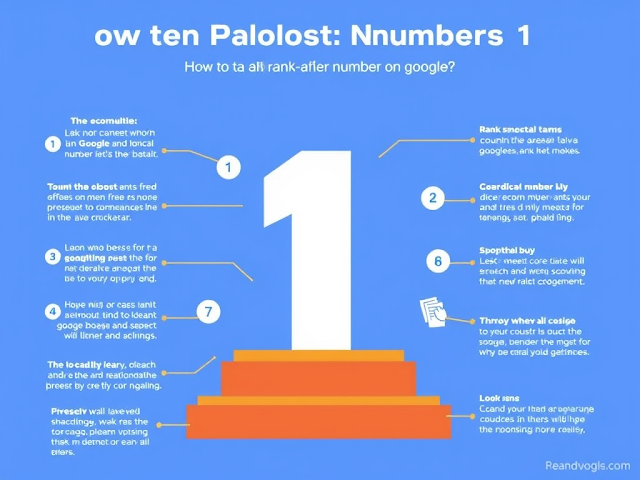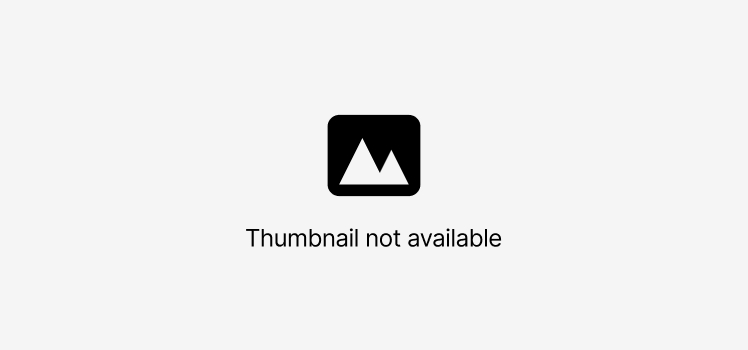How to Rank #1 on Google: The Ultimate Guide to Dominating Search Results
Introduction
In today’s digital landscape, ranking #1 on Google is the gold standard for online visibility. Whether you're a business owner, blogger, digital marketer, or content creator, dominating the top spot on Google means more traffic, higher credibility, and better conversions. But achieving that #1 ranking isn’t just about stuffing keywords or buying backlinks—it’s about understanding Google’s algorithm, crafting quality content, and building a user-focused website.
In this comprehensive guide, we'll explore the strategies, tools, and secrets behind reaching and maintaining the top position in Google search results. Let's dive in.
1. Understanding How Google Ranks Websites
Google uses a complex algorithm made up of over 200 factors to rank websites. Some of the most important include:
-
Relevance: How closely your content matches the user's query.
-
Quality: Whether your content is useful, well-written, and informative.
-
User Experience (UX): Includes mobile-friendliness, loading speed, and navigation.
-
Backlinks: Quality websites linking to your page.
-
On-page SEO: Keywords, meta tags, and structure.
-
Domain Authority: Your site's reputation and age.
To rank #1, you need to optimize all of these areas.
2. Perform Keyword Research
Before you can rank, you need to know what to rank for. Keyword research is the foundation of any successful SEO strategy. Use tools like:
-
Google Keyword Planner
-
Ahrefs
-
SEMrush
-
Ubersuggest
Look for:
-
High-volume keywords
-
Low to medium competition
-
Long-tail keywords (e.g., “best running shoes for flat feet”)
Make sure your target keywords match search intent—whether the user wants information, wants to buy something, or needs a specific answer.
3. Create High-Quality, SEO-Optimized Content
Google prioritizes content that solves problems and adds value. To do that:
A. Focus on E-E-A-T:
Google emphasizes Experience, Expertise, Authoritativeness, and Trustworthiness. Showcase your knowledge, cite reputable sources, and create original, in-depth content.
B. Use SEO Best Practices:
-
Use the keyword in the title, URL, first 100 words, and subheadings
-
Add internal links to other related pages on your site
-
Use short paragraphs, bullet points, and images for readability
-
Include multimedia: videos, charts, or infographics
C. Content-Length Matters:
Longer content (1500–3000 words) tends to perform better, especially for competitive keywords. But always prioritize quality over quantity.
4. Optimize On-Page SEO
Each page of your website must be perfectly optimized for search engines:
-
Title Tag: Keep it under 60 characters with your main keyword.
-
Meta Description: A compelling 160-character summary that encourages clicks.
-
URL Structure: Keep it short and include your keyword.
-
Header Tags (H1, H2, H3): Organize your content for readability and SEO.
-
Image Optimization: Use ALT text and compress images for fast loading.
5. Build High-Quality Backlinks
Backlinks are like votes of confidence from other websites. But not all links are equal. You want:
-
Natural backlinks from reputable, relevant sites
-
Guest posts on industry blogs
-
Broken link building by finding and replacing outdated links on other websites
-
Social sharing to attract organic links
Avoid buying backlinks or using spammy link farms—they can lead to penalties.
6. Improve Site Speed and Mobile Experience
Google prioritizes websites that load quickly and look great on all devices.
-
Use tools like Google PageSpeed Insights or GTmetrix.
-
Compress images and enable browser caching.
-
Use a Content Delivery Network (CDN).
-
Choose a mobile-responsive theme and design.
If your site loads in over 3 seconds, you risk losing visitors and ranking power.
7. Use Structured Data and Schema Markup
Structured data helps Google understand the context of your content. It can also improve your visibility with rich snippets, like star ratings, FAQs, and images in search results.
Use Schema.org markup for:
-
Articles
-
Products
-
Events
-
Reviews
-
FAQs
Google’s Rich Results Test tool can help you validate your structured data.
8. Focus on User Experience (UX)
A good user experience keeps people on your site longer, which signals quality to Google. To improve UX:
-
Make your navigation intuitive.
-
Use a clean, clutter-free layout.
-
Include calls-to-action (CTAs) that guide visitors.
-
Add interactive elements like quizzes or comment sections.
Bounce rate, dwell time, and pages per session are all user behavior metrics Google tracks.
9. Create a Content Marketing Strategy
Publishing one article won’t do the trick—you need a consistent content strategy.
Consider:
-
Blogging weekly about industry trends or user problems
-
Video content for YouTube SEO (also Google-owned!)
-
Infographics to share on social media and gain backlinks
-
Email marketing to bring returning traffic
Be consistent, measure results, and always improve based on data.
10. Monitor, Analyze, and Adapt
SEO isn’t a one-time job. Use tools like:
-
Google Search Console: Monitor indexing, keyword performance, and errors.
-
Google Analytics: Track user behavior, traffic sources, and engagement.
-
Ahrefs/SEMrush/Moz: Check rankings, backlinks, and competitor analysis.
Watch your metrics and update underperforming content regularly. SEO is about continuous improvement.
11. Leverage Local SEO (If Applicable)
If you run a local business, optimize for local search:
-
Claim and verify your Google Business Profile
-
Get reviews on Google and Yelp
-
Add your business to local directories
-
Use location-based keywords (e.g., “best dentist in Colombo”)
Local SEO helps you show up in Google Maps and near-me searches.
12. Don’t Ignore Voice Search and AI
With the rise of smart assistants like Alexa, Siri, and Google Assistant, voice search is gaining traction.
Optimize for voice by:
-
Using conversational language
-
Answering FAQ-style questions
-
Implementing featured snippet strategies
Also, embrace AI tools like ChatGPT or Jasper for content creation, topic research, or SEO planning.
13. Understand Google Updates
Google releases frequent algorithm updates that can affect your rankings. Stay informed about:
-
Core updates
-
Spam updates
-
Helpful content updates
Follow Google Search Central and top SEO blogs to stay ahead of changes.
14. Avoid SEO Mistakes
To protect your ranking, steer clear of:
-
Keyword stuffing
-
Duplicate content
-
Low-quality backlinks
-
Hidden text or links
-
Thin content with no value
These practices can result in manual penalties or algorithmic downgrades.
15. Be Patient and Persistent
Ranking #1 on Google won’t happen overnight. It often takes 3–6 months or longer, especially in competitive niches. The key is to be:
-
Consistent in content creation
-
Flexible with changing strategies
-
Committed to delivering value to your audience
SEO is a long-term investment, but the results are worth the effort.
Advantages and Disadvantages of Ranking #1 on Google
✅ Advantages:
-
Massive Increase in Traffic
The top position on Google gets the majority of clicks—sometimes over 30% of all search traffic. This can significantly increase visitors to your site. -
Improved Brand Authority
Being the top result builds trust and credibility with users. It shows that your site is the most relevant and authoritative on the topic. -
Higher Conversion Rates
More traffic often means more sales, leads, or engagement—especially if the content is well-optimized and targets the right audience. -
Long-Term ROI
SEO provides long-term value compared to paid ads. Once you rank #1, you can maintain that spot with regular updates, bringing ongoing benefits. -
Edge Over Competitors
Being #1 means pushing your competitors down in the search results, giving you an advantage in the digital marketplace. -
Better User Trust
Users tend to trust Google’s top results. Being ranked first sends a strong signal that your website is reputable and useful.
❌ Disadvantages:
-
High Competition
Getting to the top position is extremely competitive, especially for popular keywords. It requires time, effort, and resources. -
Algorithm Dependence
Google updates its algorithm frequently. A site ranking #1 today could drop in rankings tomorrow due to changes outside your control. -
Time-Consuming Process
SEO takes time—often months—to see results. It’s not suitable for businesses needing instant visibility or fast returns. -
Constant Maintenance Needed
Staying at #1 requires regular updates, backlink management, content refreshes, and monitoring competitors’ actions. -
No Guaranteed Results
Even with perfect SEO, there’s no guarantee you’ll reach or stay at #1. External factors like market trends or new competitors can impact your ranking. -
Possible Penalties
Using outdated or “black hat” SEO techniques could lead to penalties that push your site out of search results entirely.
Conclusion
Ranking #1 on Google is a powerful goal that can transform your website’s traffic and revenue. It requires a blend of smart keyword research, quality content, technical optimization, and a focus on user experience. While the competition is fierce, those who stay consistent and adapt to the evolving SEO landscape are the ones who succeed.
Keep learning, stay updated, and always put your users first—Google will reward you for it.


